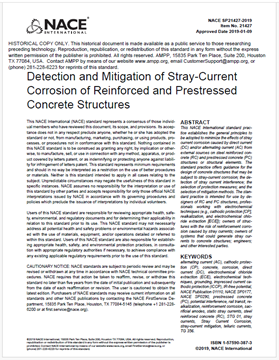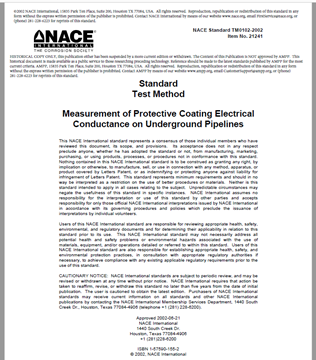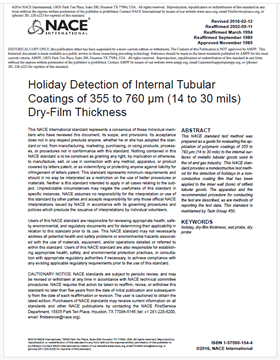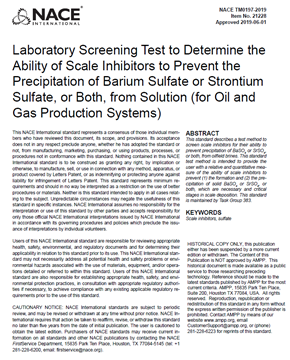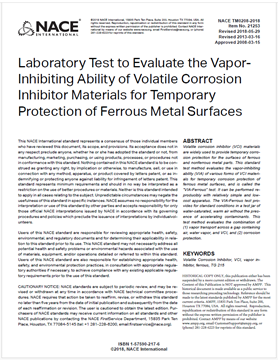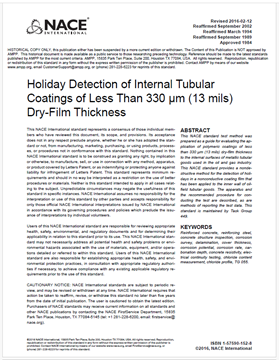Search
Products tagged with 'historical document'
View as
Sort by
Display
per page
NACE SP0592-2006, Application of a Coating System to Interior Surfaces of New and Used Rail Tank Cars in Concentrated (90 to 98%) Sulfuric Acid Service
Product Number:
21057-SG
Publication Date:
2006
$179.00
NACE SP21412-2016/SSPC-CPC 1, Corrosion Prevention and Control Planning
Product Number:
21412-SG
ISBN:
1-57590-356-3
Publication Date:
2016
$179.00
NACE SP21427-2019 “Detection and Mitigation of Stray-Current Corrosion of Reinforced and Prestressed Concrete Structures”
Product Number:
21427-SG
Publication Date:
2019
$179.00
NACE TM0102-2002, Measurement of Protective Coating Electrical Conductance on Underground Pipelines
Product Number:
21241-SG
Publication Date:
2002
$179.00
NACE TM0177-2005, Laboratory Testing of Metals for Resistance to Sulfide Stress Cracking and Stress Corrosion Cracking in H2S Environments
Product Number:
NACE TM0177-2005
Publication Date:
2005
$179.00
NACE TM0186-2016, Holiday Detection of Internal Tubular Coatings of 355 to 760 μm (14 to 30 mils) Dry-Film Thickness
Product Number:
21218-SG
Publication Date:
2016
$179.00
NACE TM0190-2017, Impressed Current Laboratory Testing of Aluminum and Zinc Alloy Anodes
Product Number:
21221-SG
Publication Date:
2017
$179.00
NACE TM0197-2019, Laboratory Screening Test to Determine the Ability of Scale Inhibitors to Prevent the Precipitation of Barium Sulfate or Strontium Sulfate, or Both, from Solution (for Oil and Gas Production Systems)
Product Number:
21228-2019
Publication Date:
2019
$179.00
NACE TM0208-2018 "Laboratory Test to Evaluate the Vapor-Inhibiting Ability of Volatile Corrosion Inhibitor Materials for Temporary Protection of Ferrous Metal Surfaces"
Product Number:
21253-SG
Publication Date:
2018
$179.00
NACE TM0294-HD1994-SG Testing of Embeddable Anodes for Use in Cathodic Protection of Atmospherically Exposed Steel-Reinforced Concrete-HD1994
Product Number:
21225-HD1994
Publication Date:
1994
$179.00
NACE TM0316-2016, “Four-Point Bend Testing of Materials for Oil and Gas Applications”
Product Number:
21404-SG
Publication Date:
2016
$179.00
NACE TM0384-2016, Detection of Internal Tubular Coatings of Less Than 250 μm (10 mils) Dry-Film Thickness
Product Number:
21216-SG
Publication Date:
2016
$179.00



